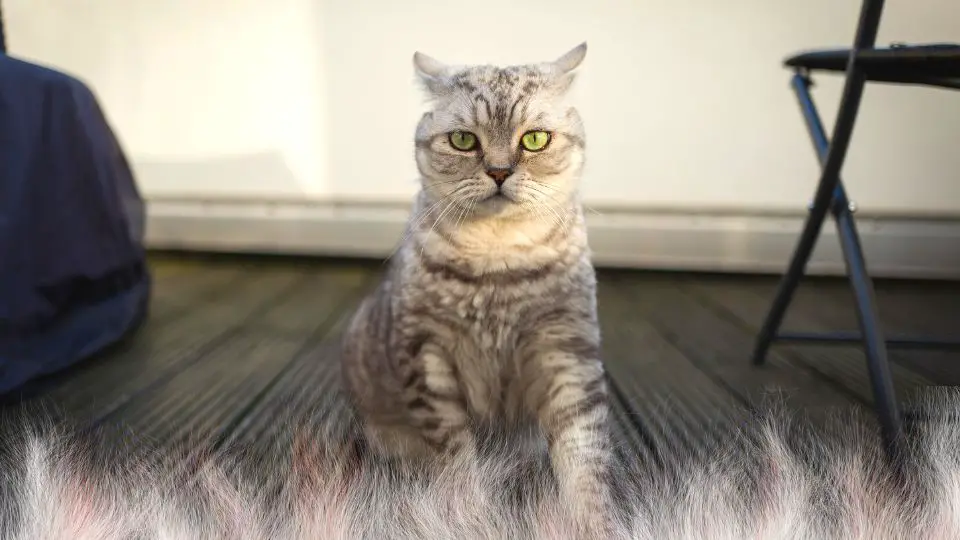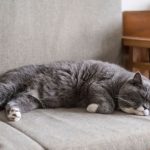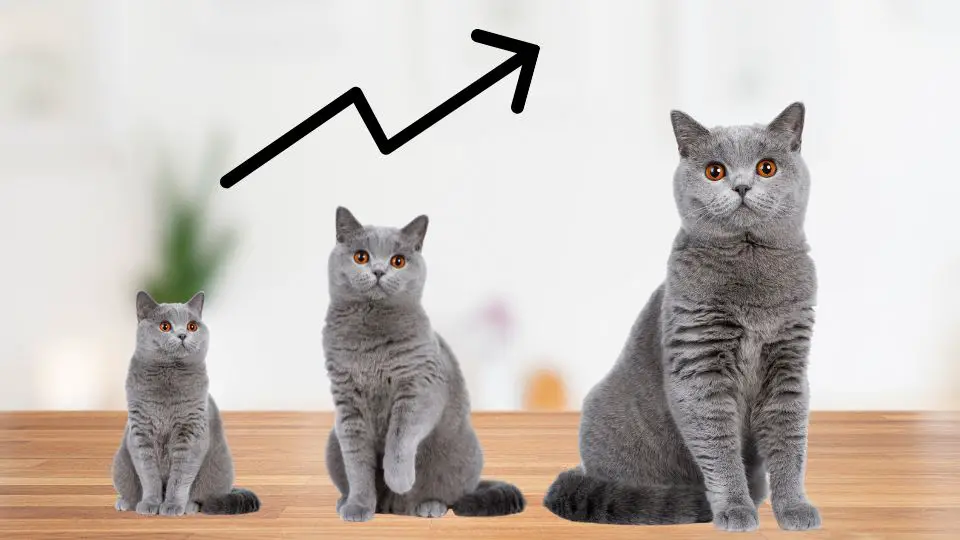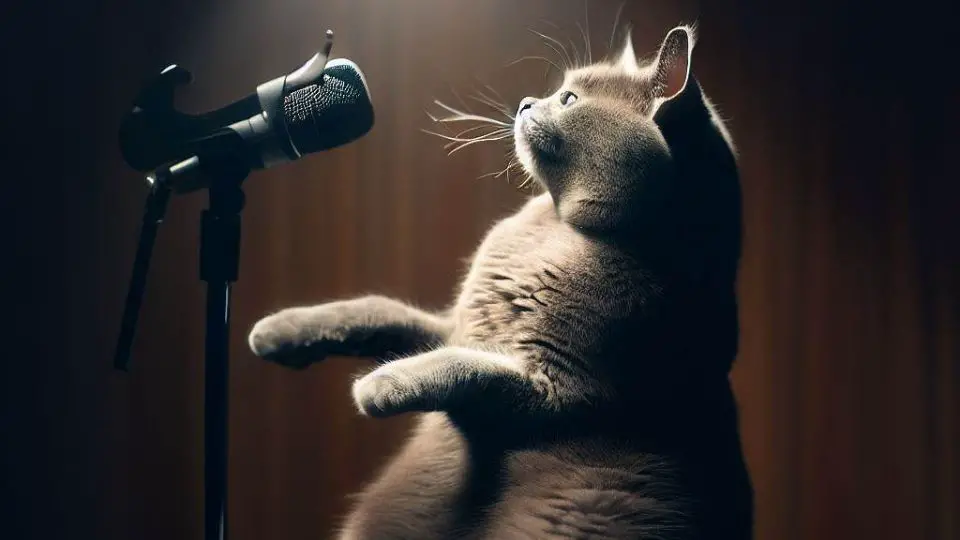British Shorthair cats do shed. Shedding is a natural process for all cats, and while British Shorthairs have a shorter coat than some other breeds, they still shed regularly.
The frequency and amount of shedding can vary depending on factors such as coat type and environmental factors. Regular grooming practices and a healthy diet can help manage shedding in British Shorthairs.
In this article, we’ll discuss the shedding habits of British Shorthairs and what you can do to help keep your cat’s coat in good condition.
Understanding Shedding
Shedding is a natural and necessary process for cats. It refers to the shedding of old or damaged fur to make way for new growth. Shedding is a sign of a healthy coat and is essential for maintaining the health of a cat’s skin and fur.
Cats shed for a variety of reasons, including changes in temperature, seasonal changes, hormonal changes, and skin health. In the wild, cats shed their fur to adjust to changes in temperature. As the temperature gets warmer, they shed their thick winter coat to allow for a lighter summer coat.
Additionally, hormonal changes can also cause shedding, such as during pregnancy or nursing.
Normal shedding vs. excessive shedding
Normal shedding is a natural and healthy process, whereas excessive shedding can be a sign of an underlying health issue. Excessive shedding can be caused by a variety of factors, including poor nutrition, stress, allergies, parasites, and hormonal imbalances. Monitor your cat’s shedding patterns and note any changes or signs of excessive shedding.
Additionally, cats who have long or thick coats tend to shed more than cats with shorter coats. This is because longer and thicker coats require more maintenance to keep them healthy and free of tangles and matting.
Which cat sheds the most?
Long-haired cats tend to shed more than short-haired cats, due to the amount of fur they have. Breeds such as Maine Coons, Persians, and Ragdolls are known to shed more than other breeds. However, it’s important to note that shedding can vary from cat to cat, even within the same breed.
British Shorthairs Shedding
British Shorthair cats have a dense and plush coat, which requires regular grooming to keep it healthy and free of tangles. While their coat is not as long as other breeds, it still sheds regularly to allow for new hair growth.
British Shorthair cats come in a variety of colors and patterns, which can affect the appearance of their shedding. For example, a black British Shorthair cat may appear to shed more visibly than a gray or white British Shorthair.
Shedding patterns and frequency
British Shorthair cats typically shed their coat twice a year: in the spring and fall. During shedding season, you may notice more hair than usual on your furniture and clothing. However, shedding can also occur year-round, as cats naturally shed old or damaged fur to make way for new growth.
Environmental factors can also affect shedding in British Shorthair cats. For example, dry air in the winter can cause cats to shed more frequently. Stress can also cause excessive shedding in cats. Changes in a cat’s environment or routine, such as moving to a new home or the addition of a new pet, can cause stress and increase shedding.
Why Is My British Shorthair Losing Hair?
Here are some possible reasons why your British Shorthair may be losing hair:
Allergies
Allergies can cause hair loss in cats, especially if they are allergic to flea bites, certain foods, or environmental factors such as pollen or dust. If you suspect your cat has an allergy, talk to your veterinarian about testing and treatment options.
Parasites
Fleas, ticks, and mites can all cause hair loss in cats. These parasites irritate the skin and can cause your cat to scratch or bite at their fur, leading to hair loss. Regular flea and tick prevention, along with treatment for any infestations, can help prevent hair loss caused by parasites.
Skin infections
Bacterial or fungal infections can cause hair loss in cats. These infections can be caused by a variety of factors, including poor grooming habits or an underlying health condition. If you suspect your cat has a skin infection, take them to the veterinarian for diagnosis and treatment.
Hormonal imbalances
Hormonal imbalances, such as hyperthyroidism or Cushing’s disease, can cause hair loss in cats. These conditions affect the cat’s hormone levels and can cause a variety of symptoms, including hair loss. If you suspect your cat has a hormonal imbalance, consult with your veterinarian for testing and treatment options.
Stress
Stress can cause hair loss in cats, especially if they are experiencing changes in their environment or routine. Cats may also over-groom or lick excessively when stressed, leading to hair loss. Providing a calm and predictable environment, along with regular playtime and exercise, can help reduce stress in cats and prevent hair loss.
How Can I Make My British Shorthair Shed Less?
If you’re a British Shorthair cat owner, you may be wondering how to manage shedding in your furry friend. While shedding is a natural process, there are steps you can take to help reduce shedding and keep your cat’s coat healthy. Here are some tips for making your British Shorthair shed less:
Regular grooming practices
Regular grooming can help remove loose fur and prevent matting, which can contribute to shedding. Brushing your cat’s coat daily or every other day can help keep their coat healthy and shiny. You can also use a deshedding tool or a damp cloth to remove loose fur.
Diet and nutrition
A healthy and balanced diet that includes essential fatty acids can help promote healthy skin and coat, which can reduce shedding. Make sure your cat is getting enough protein, vitamins, and minerals to support their overall health.
Environmental modifications
Environmental factors such as dry air, stress, and exposure to allergens can all contribute to shedding. Keeping your home at a comfortable humidity level, providing a calm and predictable environment, and removing allergens from your cat’s environment can help reduce shedding.
When to seek veterinary care
If you notice excessive shedding or changes in your cat’s coat, it’s important to take them to the veterinarian for diagnosis and treatment. Excessive shedding can be a sign of an underlying health issue, such as allergies or parasites.
Conclusion
In conclusion, British Shorthair cats do shed, but shedding is a natural process that can be managed with proper care and maintenance. Understanding the factors that contribute to shedding, such as coat type and environmental factors, can help cat owners develop strategies to manage shedding and keep their cat’s coat healthy.
Regular grooming practices, a healthy diet, and environmental modifications can all help reduce shedding in British Shorthair cats. By taking proactive steps to manage shedding, cat owners can enjoy a healthy and happy relationship with their furry friend.







